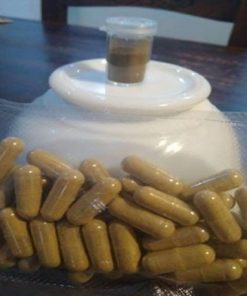Tramadol 400mg
$45.00 – $1,950.00
Tramadol is a unique compound with both a moderate mu-opioid effect (when compared to classic opioids) and a moderate monoaminergic effect (when compared to tricyclic antidepressants). Tramadol has a more acceptable side-effect profile in comparison with tricyclic antidepressants and antiepileptics. Although possible, tolerance and dependence pose uncommon complications of the treatment. Out of the four main pain types, the action of Tramadol is not limited to neuropathic pain only but also includes suppression of noxious (nociceptive) pains.
Classification of Tramadol-Manageable Pain Types
Neuropathic pain arises spontaneously or regularly from damaged nerves. The neural signals behind neuropathic pain are unlike those channeled from damaged tissue (which can appear as the result of a fall, a cut or a burn) along healthy nerves. This type of pain requires special medications known as painkillers; it not infrequently ensues from spinal cord injuries, amputated limbs (phantom pains) and postherpetic conditions.
Opioid painkillers, such as Tramadol and morphine, often come in handy for neuropathic cases. With similar efficiency, the above drugs also work for nociceptive pains, which constitute a normal response of organs/tissues to noxious injuries. This latter type includes musculoskeletal and visceral pain cases. Sometimes, sources of noxious pain can be localized (such as joint pain or cutaneous injuries); in other cases, the pain may be referred to organs or internal tissues.
Tramadol and its Mechanism of Action
Antiepileptic and tricyclic antidepressant drugs find common use in the management of neuropathic pain. Their precise mechanism of action, nevertheless, remains unknown. Use of both drug groups is limited by their side effects as it might be difficult to reach the optimal plasma concentrations needed for pain control without affecting the patient’s well-being.
Initially, neuropathic pain was considered refractory to opioids. It was only recently that opioids were rediscovered as a possible treatment for neuropathies. The mechanism by which classic opioids suppress pain is mediated by mu-receptors. Receptors of this kind are present on the pre- and post-synaptic membranes of primary afferent nerve fibers. Their activation on the presynaptic membrane reduces glutamate release. On the postsynaptic membrane, however, this process causes hypopolarisation due to an increase in potassium influx. Even with the biochemical details still unexplained, it is quite certain that the mitigating effect of Tramadol has mu-receptors as its main leverage.
Tramadol and doping
Aside from its analgesic effect, Tramadol is known as a euphoric, mood-enhancing and performance-enhancing medicine. It is exactly this combination of analgesic and euphoric properties that has put this substance on the doping list. The World Anti-Doping Agency (WADA) has informed that Tramadol was found in more than 4 percent of urine samples collected from cyclists and athletes in 2017. While being effective for sport-related traumas, this drug is argued to have a considerable performance-enhancing effect, which alone is a strong cause for banning it from competitions. For reasons unclear, the new doping list of WADA for 2019 still does not include Tramadol.
When it comes to recreational use, healthcare experts strongly advise against taking the drug due to its performance-enhancing properties. Aside from unpleasant side effects, such as nausea and vomiting, there also is the dependency problem. Sportsmen who choose to dope with Tramadol take a habit of overexercising on a daily basis, and then they quite naturally become addicted — this scenario is typical for all opioids. While there are sports organizations like the world cycling federation (UCI) which have recognized the problem and listed Tramadol as doping, most sports governing bodies continue to allow it. For instance, Tramadol has never been banned from football, and FIFA believes that it finds only very limited use among footballers and, therefore, takes no official action against it.
| Quantity | 10 tabs, 50 tabs, 100 tabs, 300 tabs, 500 tabs |
|---|
Be the first to review “Tramadol 400mg” Cancel reply
Related products
Pills
Pills
Pills
Pills
Pills












Reviews
There are no reviews yet.